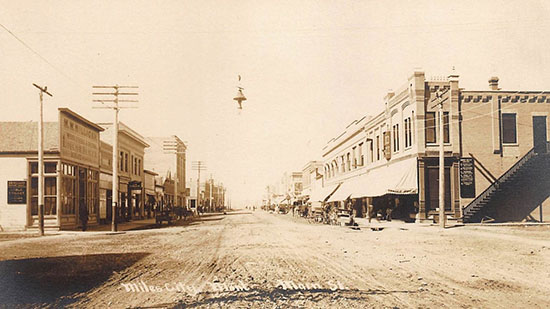History
The past still notably influences the western town of Miles City, Montana. Captain William Clark camped near the mouth of the Tongue River on July 29, 1806. Steamboats carrying immigrants, soldiers and goods traversed its course. And many others have utilized this great natural resource.
In early June 1876, Generals George Armstrong Custer and Alfred Terry conferred aboard the steamer, Far West, near what was to become Miles City. Custer and his men set out for the long march that was to end in disaster at the Little Bighorn on June 25, 1876. As a direct result of this battle and the influx of soldiers, Fort Keogh and Miles City were founded. This towns history is loaded with Saloons, dance halls, bordellos, boarding houses, and general stores that serviced the population of soldiers, buffalo hunters, bull whackers, muleskinners, cowboys, and Indians.
The military played a large role in shaping Miles City’s place in government. The railroad also positioned the town as a regional trading hub, and the Montana Stock growers Association placed their agricultural roots deep in the eastern Montana soil.
What has developed since is remarkable; an enviable way of life with one foot firmly planted in the past and one proudly stepping forward into the future. The footprint that lives on in the architecture within the housing and retail districts of Miles City is both notable and extraordinary, but it is only part of what makes Miles City a Legendary Western Town.
You can learn more about the history of Miles City at one of the many great museums throughout town.
Photos and content courtesy of the Miles City Chamber of Commerce


